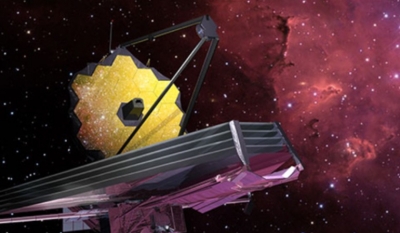
Named after Edwin Hubble – an American astronomer whose work formed the basis of the big bang theory – the Hubble Space Telescope was launched in 1990 to investigate everything from black holes to planets around other stars.
It does this by scanning across spectrums of electromagnetism, from visible light to infrared and ultraviolet.
Thanks to its instruments, Hubble has been able to peer inside cosmic clouds of gas and dust to reveal older parts of the universe, as well as providing us with our first glimpses of alien planets and galaxies far beyond our Milky Way.
The result has been some of the most iconic images we have of the universe, including the ‘Pillars of Creation’ shot which shows giant fingers of gas in a nursery of young stars.
An earth-based telescope cannot achieve the same results because of the level of interference from light and other signals on our planet.
Even after James Webb becomes fully operational, Hubble will be kept going due to its ultraviolet capabilities.
Indeed, NASA says Hubble is more scientifically productive today than it has been at any time in its past.
And given it sits just 340 miles above the earth, it could still be serviced and enhanced if its mission can keep receiving funding.
Credit : National World
Picture Credit : Google
Leave a Reply